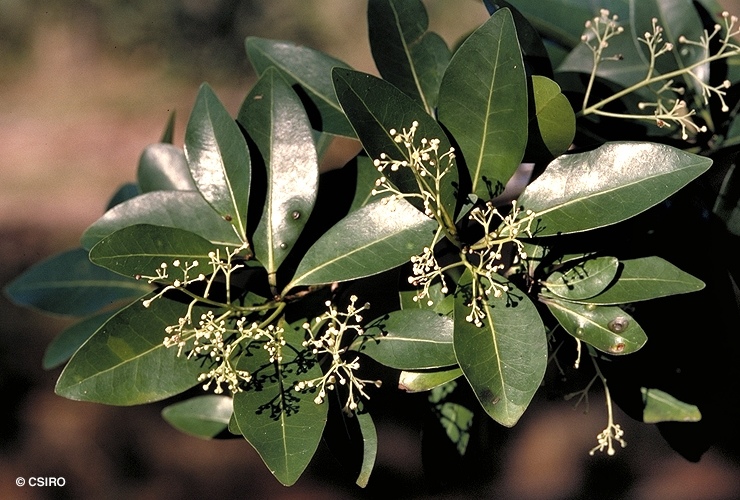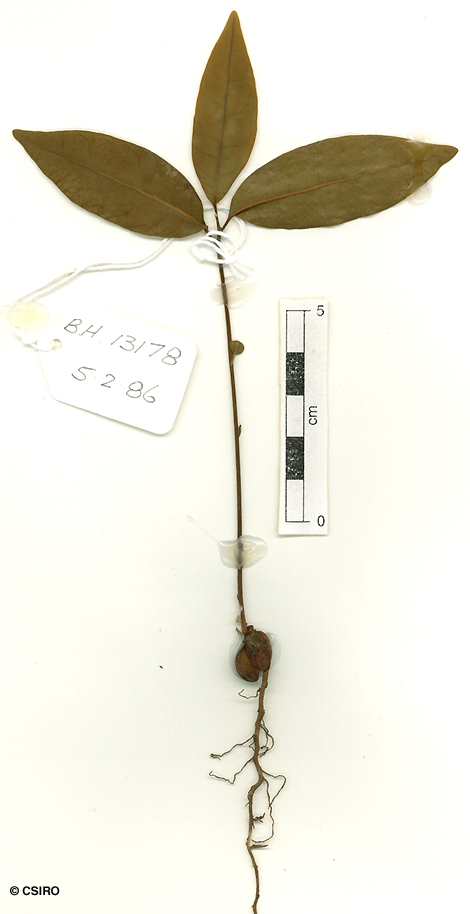Australian Tropical Rainforest Plants - Online edition
Beilschmiedia peninsularis B.Hyland




Hyland, B.P.M. (1989) Australian Systematic Botany 2: 154. Type: B. Hyland 11572: Tozers Gap, 23.i.1982 (QRS, holotypus).
Walnut, Hann; Hann Walnut
Bark pale and papery when scraped. A cream layer generally visible beneath the subrhytidome layer before the first section of the outer blaze. Hard brittle fibres in the blaze.
Twigs terete, glabrous. Leaf blades about 6-13 x 2-4 cm, green on the underside, clothed in straight, white or pale brown, appressed hairs when young but glabrous at maturity. Midrib raised on the upper surface. Petioles flat or channelled on the upper surface. Oil dots visible with a lens. Lateral veins forming loops inside the blade margin. Bark on older twigs pale, rather soft or somewhat corky.
Fruits about 20-28 x 13-15 mm. Cotyledons cream.
At the tenth leaf stage: leaf blade green on the undersurface; oil dots small, visible only with a lens. Seed germination time 21 to 103 days.
This species grows large enough to produce millable logs, but because it grows in remote areas the timber has never been utilized and has not been given a Standard Trade Name. Wood specific gravity 0.96-0.98. Hyland (1989).





